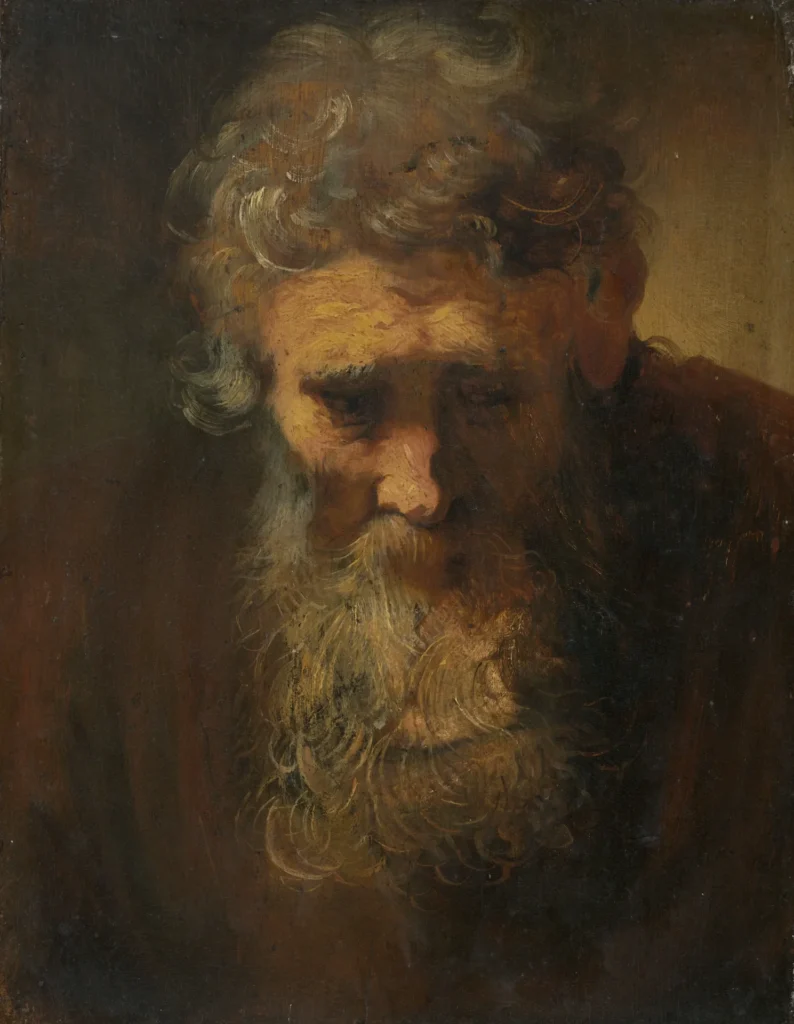Study of an Old Man
Rembrandt van Rijn, a central figure of the Dutch Golden Age, created several stunning studies of old men that reveal his remarkable skill in portraying the human experience. Works such as 'Old Man with a Gold Chain' from 1631, 'Head of an Old Man in a Cap' from the late 1620s, and 'Portrait of an Old Man (The Old Rabbi)' from 1665 demonstrate his profound understanding of light, emotion, and the intricacies of old age. Each painting, with its unique character and expressive detail, serves as a testament to Rembrandt's genius.
1631, Late 1620s, 1665, 1633
About the Artwork
Rembrandt's fascination with the human face, particularly the faces of old men, reflects his commitment to exploring the depth of human emotion and character. Each artwork captures not just physical appearances but also the psychological weight and stories carried by the subjects. For instance, 'Old Man with a Gold Chain' uses rich lighting and costume to evoke a sense of honor and pride, while 'Portrait of an Old Man (The Old Rabbi)' captures a moment of deep reflection. Through these studies, Rembrandt invites viewers into an intimate dialogue with aging, honoring their wisdom and experiences. His techniques like chiaroscuro bring out the intricacies of character, making these paintings not just static portraits but living reflections of inner life.
Did You Know
Liked what you see? Add it to your collection.
Enjoyed reading? Share it.
... continued
Old Man with a Gold Chain
This painting, dated to around 1631, is an early example of Rembrandt's character studies. The old man is depicted wearing a gold chain, a steel gorget, and a plumed beret, suggesting an honored military career. The painting highlights Rembrandt's use of costume and rich, subtle lighting to create a dramatic effect. The face of the old man is that of a real person, conveying pride and humanity. This work is part of the Mr. and Mrs. W. W. Kimball Collection at the Art Institute of Chicago
Head of an Old Man in a Cap
This work, created in the late 1620s, is a tronie, a type of character study that Rembrandt and Jan Lievens pioneered in Leiden. The old man is shown with a furrowed brow and downy beard, illuminated directly from above, which suggests an active inner life. The painting focuses on the exploration of light, emotion, and the human face, characterized by thick, unblended strokes and scratches made into the paint to convey details like eyebrows
Portrait of an Old Man (The Old Rabbi)
Painted in 1665, this portrait is from the later part of Rembrandt's career. It depicts an elderly man, possibly identified as Rabbi Saul Levy Morteira, with a detached and pensive expression. The painting emphasizes the psychology of the old man, using textured colors and a dark background to create a sense of deep contemplation. This work was once transferred to Paris during the Napoleonic era and later returned to Florence
Bust of a Bearded Old Man
This small, monochromatic oil sketch, dated to around 1633, is Rembrandt's smallest known painting and the only grisaille in private hands. The old man is depicted with his head turned sharply and eyes cast downward, conveying a sense of life and emotional energy. The use of grays and browns, along with ocher and white accents, captures the subtleties of form, light, and shade. This work is notable for its visual power and masterly technique in evoking the inner life of the subject










